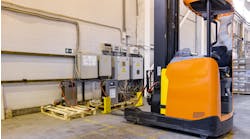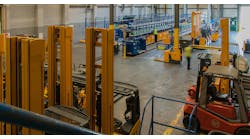Fat Isn’t Respectable
This economy is making me question some long-held business beliefs. When the heck did fat inventories become respectable? Take a look at the following excerpt from a recent Boston Globe business story:
“Yesterday, the Commerce Department reported that stockpiles of goods on shelves and back lots edged up to a seasonally adjusted $1.1 trillion in May, a 0.2 percent increase from April’s level.”
A few years ago that would have been considered bad news — a sign of poor logistics discipline. Today, with knees jerking faster on Wall Street than at a Rockettes show on Broadway, fatter inventories are now, apparently, justifiable. In the same article, economist Clifford Waldman of Waldman Associates was quoted as saying this was a hopeful sign, that companies may be feeling a little better about the recovery, which has lost steam since the beginning of the year.
Of course inventories could have gone up because of weak sales, or because suppliers just don’t know how consumers are going to react to the economy du jour, so they feed a little more stuff through the supply chain.
Just-In-Case inventory practices seem to be today’s state of the art. That’s leaving new supply chain technology on the shelf — for now. But if economists choose to take the “glass is half full” approach to market analysis, maybe you and I have good reason to join them.
I just saw the results of MHM’s most recent Reader Profile Study. One of the key findings is that your fellow readers (and you may be among them) plan to invest more than $6 billion in material handling equipment, systems and related software in the next 18 months. This statistic is supported by other material handling market studies. For example, the Cleveland-based Freedonia Group, in its most recent Industry Study of Material Handling Systems, projects that the overall U.S. market for material handling systems and equipment will increase 5.2 percent per year through 2006.
The researchers tie economic recovery to new generations of systems offering performance and productivity advances over earlier products. But do you know who gets the credit for spurring this investment in material handling? Not the industrial sector. They’re still waiting for a sustained recovery.
The consumer is the hero. Freedonia says material handling demand associated with consumer spending — especially in retailing and distribution — is holding up better than in the industrial sector.
Maybe that explains why one of the bright spots in supply chain information technology is point-of-sale (POS) information systems. Allow me to cite one more bit of research. According to Venture Development Corporation’s new market study, Retail Automation Equipment: A Vertical Market Analysis of Usage and Plans for Wireless, Emerging, and Traditional Technologies, shipments of retail automation hardware are expected to increase by 5.8 percent annually, reaching more than $3.2 billion by 2006. This growth will be bolstered by increased shipments of emerging POS technologies such as self-checkout terminals, RFID devices and electronic shelf label hardware.
This is good news for inventory managers. With a clear view of consumer activity at the store level, a logistics execution system will be better able to help you melt fat from your Just-In-Case inventories.
Let’s hope this news makes the papers soon.
Tom Andel, chief editor, [email protected]


